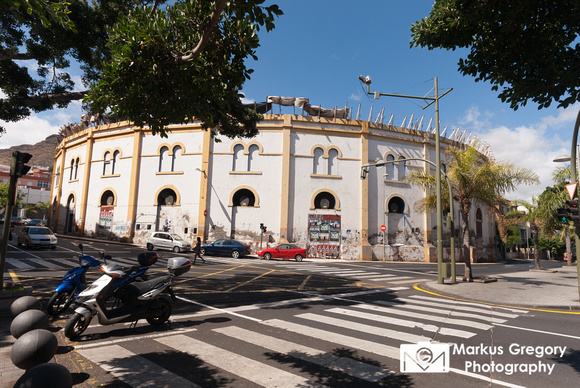Santa Cruz de Tenerife
Santa Cruz de Tenerife (commonly known as Santa Cruz) is the capital (jointly with Las Palmas), second-most populous city of the Autonomous Community of the Canary Islands and the 21st largest city in Spain, with a population of 222,417 in 2009. It is, depending on sources, the 13th, 14th, or 16th-most populous metropolitan area in Spain, with the population 404,913, 481,592 or 581,947. Santa Cruz is the second largest city and metropolitan area of the European Union outside Europe. Santa Cruz de Tenerife is also the capital of the island of Tenerife (most populated of archipelago and Spain) and capital of the province of Santa Cruz de Tenerife. Located in northeast quadrant of Tenerife, about 210 kilometres (130 mi) off the northwestern coast of Africa within the Atlantic Ocean. Between the 1833 territorial division of Spain and 1927 Santa Cruz de Tenerife was the sole capital of the Canary Islands, until 1927 when a decree ordered that the capital of the Canary Islands be shared, as it remains at present. The port is of great importance and is the communications hub between Europe, Africa and Americas, with cruise ships arriving from many nations. The city is the nerve center on domestic and inter-island communications in the Canary Islands. The city is home to the Parliament of the Canary Islands, the Canarian Ministry of Presidency (shared in a four-year term with Las Palmas de Gran Canaria), one half of the ministries and boards of the Canarian Government, (the other half being located in Gran Canaria), the Tenerife Provincial Courts and two courts of the Superior Court of Justice of the Canary Islands. There are several facilities of the La Laguna University in Santa Cruz, including the Fine Arts School and the Naval Sciences Faculty. Its harbour is one of Spain's busiest; it comprises three sectors. It is important for commercial and passenger traffic, as well as for being a major stopover for cruisers en route from Europe to the Caribbean. Also has one of the world's largest carnivals. The Carnival of Santa Cruz de Tenerife now aspires to become a World Heritage Site, and is the most important of Spain and the second largest in the world. The main landmarks of the city include the Auditorio de Tenerife (Auditorium of Tenerife), the Santa Cruz Towers (Torres de Santa Cruz) and the Iglesia de la Concepción. Santa Cruz de Tenerife hosts the first headquarters of the Center UNESCO in the Canary Islands. The city is a melting pot of diverse cultures that give it a cosmopolitan character. The largest distinct communities have immigrants from: Latin America, Africa and Western Europe. In recent years the city of Santa Cruz de Tenerife has had a significant aug bizarre constructions, the horizon (Skyline) is the sixth in height across the country, only behind Madrid, Benidorm, Barcelona, Valencia and Bilbao.


